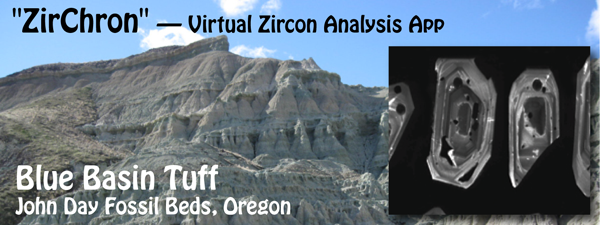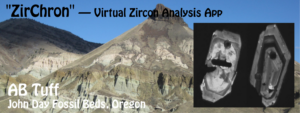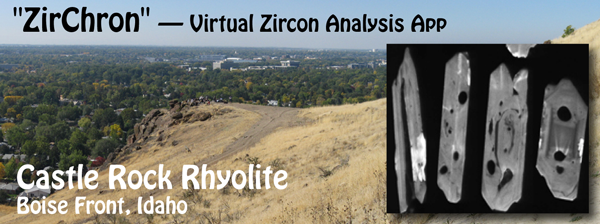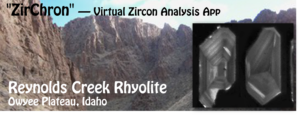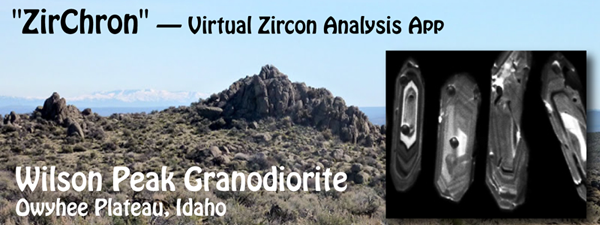Online Activities
As part of a series of online activities to teach the science of geochronology, we’ve developed an on-line Javascript and HTML-based application that allows students to explore real LA-ICPMS and ID-TIMS data sets. The app is designed around a clickable montage of high-resolution cathodoluminescence images showing the growth zoning of zircon crystals. Each crystal shows the locations of LA-ICPMS spot analyses, and was also dissolved and analyzed by ID-TIMS. Students can select what analysis mode to explore (LA-ICPMS versus ID-TIMS) and can incrementally choose a set of spots or dissolved crystals to analyze by clicking appropriately; with each click the associated isotope ratio translated into a U-Pb date appears in a tabulated list and is displayed in both histogram and summed probability density function graphical formats. The inverse-variance weighted mean, standard error, and probability of fit parameters are automatically calculated and displayed.
We provide a Student Exercise (docx) and Instructor Guide (docx) for use of the ZirChron app in exploring the criteria by which crystals from a zircon population are interrogated, a Statistics Practical (docx) for the use of basic parametric statistics to establish the precision and accuracy of U-Pb zircon ages, and the strengths and weaknesses of different analytical techniques. The initial data set used in the app is from an Oligocene volcanic tuff of the John Day Formation in Oregon, however additional sample types and ages will be added as we collect them. We encourage users to customize the curriculum for particular classroom or on-line settings, and the open-source nature of the app allows customization with your own images and data sets for users familiar with HTML. We welcome any comments, feedback, or shared innovations in curriculum—send us an email.
Click on one of the banners below to get started!
